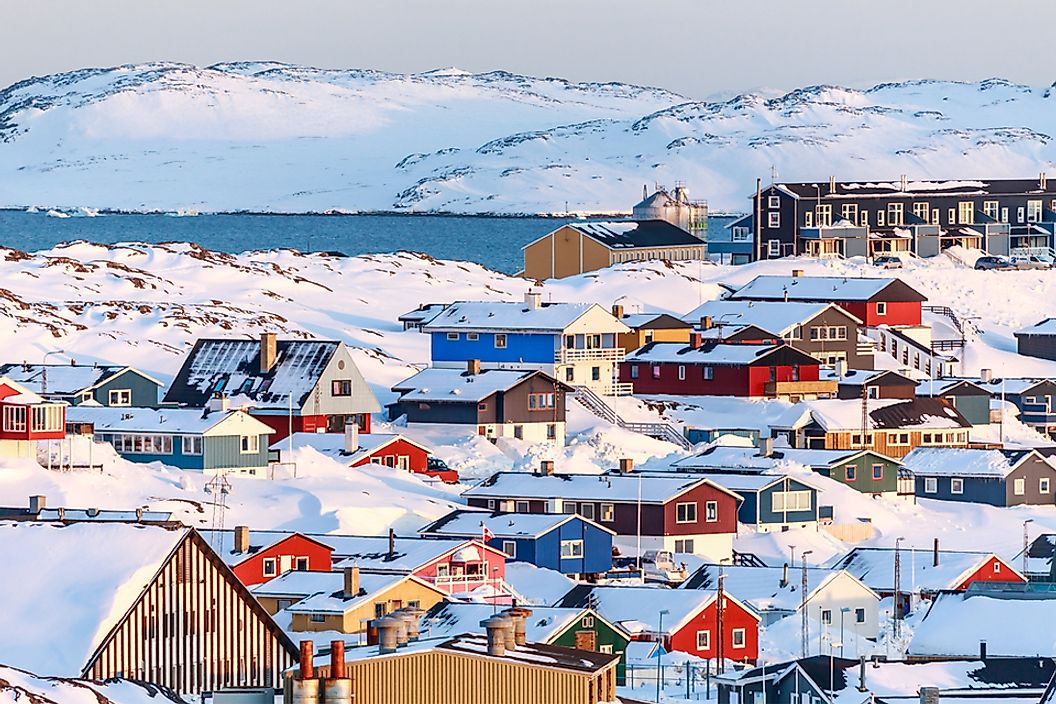What Is the Largest Island in the World?

Description
With a total area of 2,166,086 square kilometers, Greenland is the world’s largest island. The country is located in northern North America, between the Arctic Ocean and the North Atlantic Ocean, and borders Canada to the northeast and Iceland to the northwest. Greenland is famed for its expansive ice and glaciers, which cover an area of 1,755,637 square kilometers, while the rest of the island ice free. Forests occupy only 1 square kilometer of the island. At 3,694 meters, Gunnbjørn Fjeld is the highest mountain in Greenland, and the highest north of the Arctic Circle. This island has a 44,087 kilometer coast line according to a Nordic Cooperation report.
Governance
Nuuk is the capital of Greenland and also the nation's largest city. Although Greenland is part of North America, it is considered part of Europe in geopolitical terms. Greenland is an autonomous constituent country of the Kingdom of Denmark, but with a larger degree of self government since 1979. As a constituent country, the monarch of Denmark acts as the head of state. The island’s general elections are held after every 4 years to elect a 31 member parliament, which then elects a prime minister for a similar term. Upon election, the prime minister assumes the role of Greenland’s head of government. Given Greenland's ties to Denmark, the island is a member of NATO, and the Danish krone is the island’s official currency.
Structure
Greenland is part of the Nordic region, which includes countries like Denmark, Norway, Sweden, Finland, Iceland, and the Faroe Islands. These countries have a near similar history dating back to the Viking era between 800 and 1050 AD, according to the National Museum of Denmark. Greenland falls within four time zones: Atlantic, West Greenland, East Greenland, and Western European. However, the nation only adheres to the Greenland Standard time zone, because utilizing four times zones is impractical. Although ice caps and glaciers cover nearly 80 percent of the island, the ice free area is nearly as large as Sweden. According to a Nordic Cooperation report, only a small part of the land can be cultivated.
Population and Economy
According to 2014 data, Greenland’s population is less than 57,000 people, and about 15,000 live in Nuuk. Many of the island’s native inhabitants are of Central Asian descent. The main economic activities on the island are whaling, fishing, and hunting animals like musk ox and reindeer. Greenland’s economy is highly dependent on exports of shrimp and fish, and a significant subsidy from the Danish government. Fish alone accounts for over 90 percent of Greenland’s total exports. The island’s tourism sector has also been growing by 20 percent since 2015, which is mostly attributed to cruise ships operating in Greenland’s western and southern waters during the peak summer tourism season.
Challenges
The island has also experienced a myriad of challenges amidst its progress. There is scarcity of qualified labor, which is made worse by the declining population due to locals emigrating. Suicide rates, especially among young people below 25 years, are among the highest in the world. This is attributed to the gradual disappearance of the ancient Inuit language, which leaves the locals feeling isolated and lonely amidst protracted Danish influence. A clash of ancient Inuit culture and Danish civilization is evident in Greenland and has also been blamed for the high suicide rates among locals. Climate change is causing the ice and snow in the island to melt rapidly, which could cause sea levels to rise to dangerous levels, according to weather scientists.











